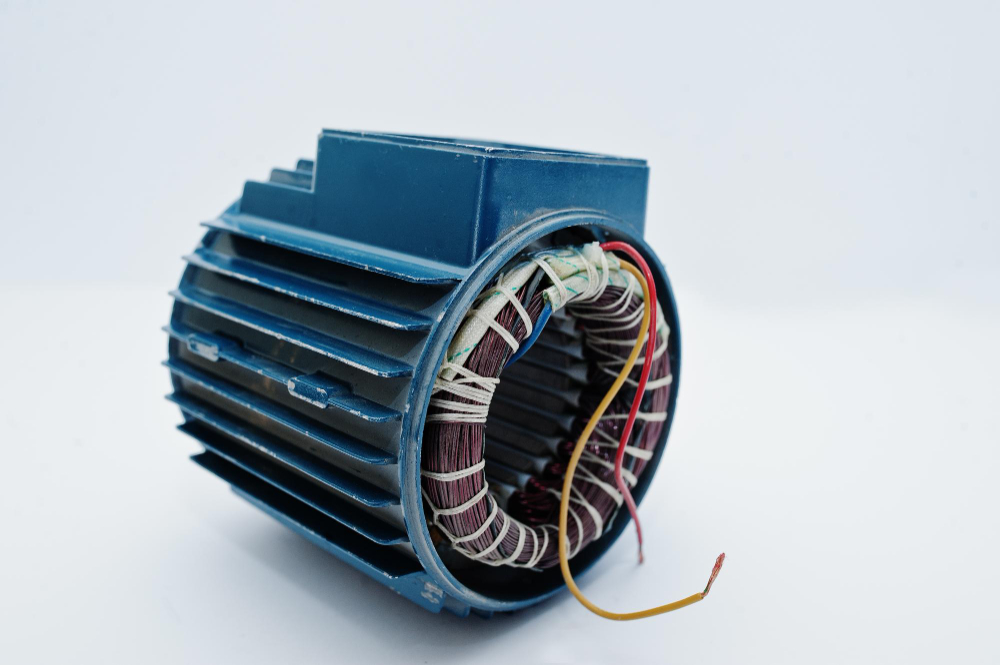Electric motor companies make electromechanical devices that convert electrical energy into mechanical energy in a motor. By using a generator, mechanical energy can be converted to electrical energy. An electric motor is found in a wide range of applications, from small appliances to the largest industrial machines. They are found in washing machines, dishwashers, fans, and a vast array of other appliances. Electric motors work on the principle of electromagnetism – created by an electric current flowing through a wire coil, producing a magnetic field. This, in turn, interacts with another coil of wire (the armature) to create a rotational force that powers the appliance.
A few tips for better maintenance of electric motors
Electric motors are integral parts of industrial and commercial operations. While electric motors are rugged and reliable, they still require regular maintenance to keep them running smoothly. For this reason, every electric motor company performs preventive maintenance procedures that ensure that electric motors always operate at an optimal level. This post will highlight important tips you can integrate for better motor maintenance and extend the life of your electric motor and keep it running at peak efficiency.
Conduct visual inspections
An electric motor is a critical component of many machines and equipment. To perform visual inspections, first, make sure the electric motor is unplugged before starting your assessment. Next, check for any signs of damage, such as broken wires, missing insulation, or burn marks. Also, look for oil or water leaks, and make sure the motor is adequately cooled. Finally, listen for any unusual noises that could indicate a problem with the motor. Following these guidelines can help keep your electric motors running smoothly and prevent costly repairs.
Maintenance checks on the commutator and brush
The commutator is responsible for transferring electrical current from the battery to the armature. On the other hand, the brush is responsible for contacting the commutator and providing a path for the current. Therefore, performing regular maintenance checks on these components is crucial to ensure they are working properly. For example, if a brush is worn out, it will not contact the commutator. If this happens, the motor will stop rotating and may even burn up. The same goes for a single-phase electric motor.
The commutator can become damaged in many ways.
- First, it may be dented by excessive current or dirty brushes.
- Second, it may become bent or corroded by water, acid, or other corrosive substances.
- Third, it may be burned out due to excessive current, poor contact with the brush, or incorrect wiring.
Conduct a motor winding test
Following the inspection of the various components of the machine, it is necessary to inspect the motor’s windings. Performing this test will assist you in identifying malfunctions or anomalies in the windings. The motor’s windings should be tested for signs of burns or cracks or if there is a burning smell. Disassembly of the motor is required to determine whether the motor contains any abnormalities. The risk of serious damage increases if the windings are overheated. Testing the wind insulation and rewinding the motor are also critical parts of the testing procedure, as they indicate the level of resistance of the motor.
Check the bearings
If any vibration or noise is heard, inspect the bearings. A build-up of dirt, inadequate lubrication, or deterioration indicates potential problems. There is also the possibility of the bearing housing becoming excessively hot. Usually, this is a sign that there is not enough grease in the motor or that it has overheated.
The primary task required may depend on the type of bearing. Furthermore, the type of electric motor used and the environment in which the equipment is located must be taken into account. Several motors with low power ratings are now equipped with sealed bearings that require no lubrication. Managing personnel at electric motor companies should have an understanding of the bearing type and the type of repair that is needed.
Performing vibration tests
It may not be easy to detect excessive vibrations manually at times. Vibration, however, can have a detrimental effect on an electric motor if it is not detected in time. Eventually, it can lead to the failure of motor bearings or windings. There are many reasons why vibration occurs, including faulty sleeves or ball bearings, excessive tension within the belt, or imbalance. To test a motor, removing the belts or disconnecting the load and operating the motor without the load attached is necessary.
In some cases, vibrations can also be caused by electrical problems. However, it may be possible to determine the exact cause of vibrations through a few tests, such as performance vibration measurement. This uses mobile instruments for measuring displacement as well as the frequency of vibrations.
Use infrared thermography in predictive maintenance
This is a process of inspecting and maintaining equipment before it fails. For example, one predictive maintenance method that can be used for electric motors is infrared thermography. This involves using an infrared camera to take pictures of the motor while running. The images will show any hot spots on the motor. These hot spots can indicate that there is a problem with the motor and it needs to be repaired or replaced. This process can be applied to single phase electric motors as well.
Conclusion
Electric motors are an essential piece of machinery in many industries. Following the proper maintenance procedures at an electric motor company ensures that your electric motor runs smoothly and lasts for years. Remember to keep a regular inspection schedule and replace any worn parts immediately.
































































